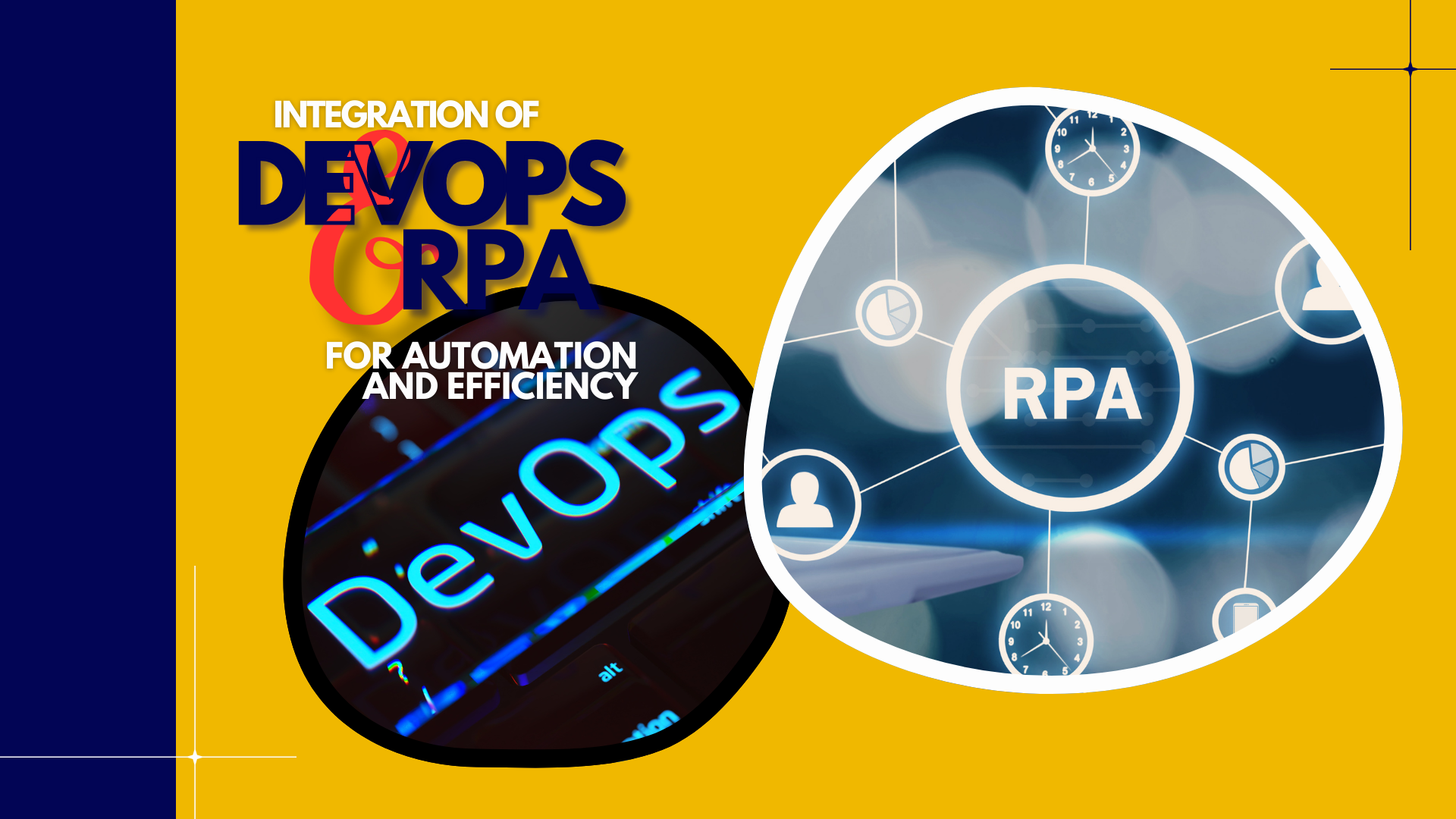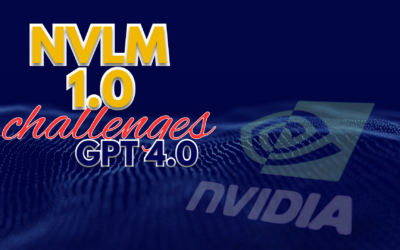RPA and DevOps are two of the most popular and powerful technologies in the modern business world. RPA stands for Robotic Process Automation, which is the use of software robots or digital workers to automate repetitive, rule-based, and high-volume tasks. DevOps stands for Development and Operations, which is a set of practices that combines software development and IT operations to deliver faster and better software products.
Both RPA and DevOps aim to improve automation and efficiency in business processes, but they do so in different ways. RPA focuses on automating the tasks that are performed by humans, while DevOps focuses on automating the tasks that are performed by software. By integrating RPA and DevOps, businesses can achieve a higher level of automation and efficiency, as well as other benefits such as faster delivery, improved quality, reduced costs, and enhanced customer satisfaction.
However, integrating RPA and DevOps is not an easy task. It requires careful planning, designing, testing, and deploying, as well as overcoming some challenges and obstacles. In this article, we will discuss the benefits, challenges, and best practices of integrating RPA and DevOps, and provide a step-by-step guide on how to do it. We will also recommend some tools and frameworks that can facilitate the integration process.
Benefits of integrating RPA and DevOps
Integrating RPA and DevOps can bring many advantages to businesses, such as:
Faster delivery
By integrating RPA and DevOps, businesses can accelerate the delivery of software products and services, as well as the automation of business processes. RPA can help automate the manual and tedious tasks that are involved in software development and deployment, such as testing, debugging, configuration, and documentation. DevOps can help streamline the collaboration and communication between the development and operations teams, as well as the continuous integration and delivery of software products. Together, RPA and DevOps can reduce the time-to-market and increase the frequency and reliability of software releases.
Improved quality
By integrating RPA and DevOps, businesses can improve the quality of software products and services, as well as the automation of business processes. RPA can help ensure the accuracy and consistency of the tasks that are performed by software robots, as well as the compliance and auditability of the automation processes. DevOps can help ensure the quality and performance of the software products, as well as the security and scalability of the software infrastructure. Together, RPA and DevOps can reduce the errors and defects, and increase the customer satisfaction and loyalty.
Reduced costs
By integrating RPA and DevOps, businesses can reduce the costs of software development and deployment, as well as the automation of business processes. RPA can help reduce the labor and operational costs, as well as the human errors and risks, that are associated with the tasks that are performed by humans. DevOps can help reduce the waste and inefficiency, as well as the downtime and maintenance, that are associated with the software development and deployment. Together, RPA and DevOps can optimize the resource utilization and allocation, and increase the return on investment and profitability.
Enhanced customer satisfaction
By integrating RPA and DevOps, businesses can enhance the customer satisfaction and experience, as well as the customer retention and acquisition. RPA can help improve the speed and responsiveness, as well as the personalization and customization, of the customer service and support. DevOps can help improve the functionality and usability, as well as the availability and reliability, of the software products and services. Together, RPA and DevOps can deliver value and delight to the customers, and increase the customer feedback and engagement.
Challenges of integrating RPA and DevOps
Integrating RPA and DevOps is not without challenges and obstacles, such as:
Cultural differences
One of the biggest challenges of integrating RPA and DevOps is the cultural differences between the teams and stakeholders that are involved in the integration process. RPA and DevOps have different goals, mindsets, and workflows, which can lead to conflicts and misunderstandings. For example, RPA teams may focus on automating the tasks that are performed by humans, while DevOps teams may focus on automating the tasks that are performed by software. RPA teams may prefer a more structured and controlled approach, while DevOps teams may prefer a more agile and flexible approach. RPA teams may have less technical skills and knowledge, while DevOps teams may have more technical skills and knowledge. To overcome this challenge, businesses need to foster a culture of collaboration and communication, as well as a culture of learning and innovation, among the teams and stakeholders that are involved in the integration process.
Technical complexity
Another challenge of integrating RPA and DevOps is the technical complexity of the integration process. RPA and DevOps have different technologies, tools, and frameworks, which can make the integration process difficult and time-consuming. For example, RPA and DevOps may use different programming languages, platforms, and environments, which can create compatibility and interoperability issues. RPA and DevOps may also use different standards, protocols, and formats, which can create data and information issues. RPA and DevOps may also have different architectures, designs, and models, which can create performance and scalability issues. To overcome this challenge, businesses need to adopt a common and consistent technology stack, as well as a common and consistent data and information strategy, among the teams and stakeholders that are involved in the integration process.
Security risks
Another challenge of integrating RPA and DevOps is the security risks of the integration process. RPA and DevOps have different security requirements, policies, and practices, which can expose the integration process to various threats and vulnerabilities. For example, RPA and DevOps may have different access and authentication mechanisms, which can create identity and authorization issues. RPA and DevOps may also have different encryption and decryption methods, which can create confidentiality and integrity issues. RPA and DevOps may also have different monitoring and auditing systems, which can create accountability and traceability issues. To overcome this challenge, businesses need to implement a comprehensive and robust security framework, as well as a comprehensive and robust security testing and validation process, among the teams and stakeholders that are involved in the integration process.
Governance issues
Another challenge of integrating RPA and DevOps is the governance issues of the integration process. RPA and DevOps have different governance structures, roles, and responsibilities, which can create confusion and ambiguity in the integration process. For example, RPA and DevOps may have different decision-making and approval processes, which can create alignment and coordination issues. RPA and DevOps may also have different reporting and documentation processes, which can create transparency and visibility issues. RPA and DevOps may also have different risk and compliance processes, which can create quality and reliability issues. To overcome this challenge, businesses need to establish a clear and effective governance model, as well as a clear and effective governance process, among the teams and stakeholders that are involved in the integration process.
How to integrate RPA and DevOps
Integrating RPA and DevOps is a complex and challenging process, but it can be done successfully by following some steps and best practices, such as:
Step 1: Plan and design
The first step of integrating RPA and DevOps is to plan and design the integration process. This involves identifying and analyzing the business needs and objectives, as well as the technical requirements and specifications, of the integration process. This also involves defining and prioritizing the scope and deliverables, as well as the budget and timeline, of the integration process. This also involves selecting and evaluating the technologies, tools, and frameworks, as well as the standards, protocols, and formats, of the integration process. This also involves assigning and training the teams and stakeholders, as well as the roles and responsibilities, of the integration process.
Step 2: Test and validate
The second step of integrating RPA and DevOps is to test and validate the integration process. This involves developing and executing the test cases and scenarios, as well as the test data and scripts, of the integration process. This also involves verifying and validating the functionality and usability, as well as the performance and scalability, of the integration process. This also involves detecting and resolving the errors and defects, as well as the threats and vulnerabilities, of the integration process. This also involves measuring and reporting the results and outcomes, as well as the feedback and improvement, of the integration process.
Step 3: Deploy and monitor
The third step of integrating RPA and DevOps is to deploy and monitor the integration process. This involves deploying and releasing the software products and services, as well as the automation of business processes, of the integration process. This also involves monitoring and managing the availability and reliability, as well as the security and compliance, of the integration process. This also involves updating and maintaining the software products and services, as well as the automation of business processes, of the integration process. This also involves evaluating and reviewing the value and impact, as well as the customer satisfaction and experience, of the integration process.
Some of the best practices of integrating RPA and DevOps
Use a hybrid approach
One of the best practices of integrating RPA and DevOps is to use a hybrid approach that combines the strengths and advantages of both RPA and DevOps, while minimizing the weaknesses and disadvantages of both RPA and DevOps. A hybrid approach can help balance the trade-offs and synergies between RPA and DevOps, and achieve the optimal level of automation and efficiency for each business process. A hybrid approach can also help adapt to the changing needs and demands of the business environment, and leverage the opportunities and innovations of the technology landscape. A hybrid approach can be implemented by using a combination of different types of RPA and DevOps, such as:
Attended RPA and DevOps
This type of RPA and DevOps involves the collaboration and interaction between humans and software robots, as well as between developers and operators, in the integration process. Attended RPA and DevOps can help automate the tasks that require human input, judgment, or supervision, as well as the tasks that require developer input, feedback, or approval, in the integration process. Attended RPA and DevOps can also help enhance the user experience and satisfaction, as well as the developer experience and satisfaction, in the integration process.
Unattended RPA and DevOps
This type of RPA and DevOps involves the automation and orchestration of the tasks that are performed by software robots, as well as by software products and services, in the integration process. Unattended RPA and DevOps can help automate the tasks that are repetitive, rule-based, and high-volume, as well as the tasks that are continuous, integrated, and delivered, in the integration process. Unattended RPA and DevOps can also help improve the speed and reliability, as well as the quality and performance, in the integration process.
Cognitive RPA and DevOps
This type of RPA and DevOps involves the application and integration of artificial intelligence and machine learning technologies, such as natural language processing, computer vision, and data analytics, in the integration process. Cognitive RPA and DevOps can help automate the tasks that are complex, dynamic, and unstructured, as well as the tasks that are intelligent, adaptive, and predictive, in the integration process. Cognitive RPA and DevOps can also help increase the accuracy and consistency, as well as the functionality and usability, in the integration process.
Use a modular approach
Another best practice of integrating RPA and DevOps is to use a modular approach that divides the integration process into smaller and simpler units, components, or modules, that can be developed, tested, deployed, and monitored independently and iteratively. A modular approach can help reduce the complexity and difficulty, as well as the time and cost, of the integration process. A modular approach can also help increase the flexibility and scalability, as well as the reusability and maintainability, of the integration process.
A modular approach can be implemented by using a combination of different methods and techniques, such as:
Microservices
This is a method of developing and deploying software products and services as a collection of small and independent services that communicate with each other through well-defined interfaces and protocols. Microservices can help decouple the software products and services from the underlying infrastructure and platform, as well as from the other software products and services, in the integration process. Microservices can also help enable the continuous integration and delivery, as well as the continuous testing and monitoring, of the software products and services, in the integration process.
Containers
This is a technique of packaging and running software products and services as isolated and lightweight units that share the same operating system kernel and resources, but have their own dependencies and configurations. Containers can help isolate and secure the software products and services from the external environment and influences, as well as from the other software products and services, in the integration process. Containers can also help optimize the resource utilization and allocation, as well as the performance and scalability, of the software products and services, in the integration process.
APIs
This is a technique of exposing and accessing the functionality and data of software products and services as a set of well-defined and standardized commands and responses that can be invoked and exchanged through the internet or other networks. APIs can help integrate and communicate the software products and services with the software robots and digital workers, as well as with the other software products and services, in the integration process. APIs can also help customize and personalize the software products and services, as well as the automation of business processes, in the integration process.
Conclusion
RPA and DevOps are two of the most powerful and popular technologies in the modern business world, that can help improve automation and efficiency in business processes. By integrating RPA and DevOps, businesses can achieve a higher level of automation and efficiency, as well as other benefits such as faster delivery, improved quality, reduced costs, and enhanced customer satisfaction. However, integrating RPA and DevOps is not an easy task. It requires careful planning, designing, testing, and deploying, as well as overcoming some challenges and obstacles. In this article, we have discussed the benefits, challenges, and best practices of integrating RPA and DevOps, and provided a step-by-step guide on how to do it. We have also recommended some tools and frameworks that can facilitate the integration process.
If you are interested in integrating RPA and DevOps for your business, you can start by following the steps and best practices that we have suggested in this article. You can also contact us for more information and assistance. We are a team of experts and professionals in RPA and DevOps, who can help you with your integration journey. We can help you with the planning, designing, testing, and deploying of your integration process, as well as with the overcoming of the challenges and obstacles. We can also help you with the selection and evaluation of the technologies, tools, and frameworks, as well as with the training and support of the teams and stakeholders, of your integration process.




